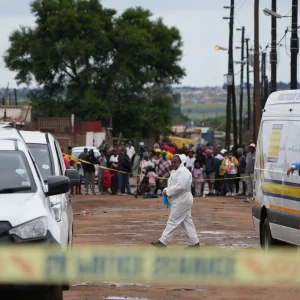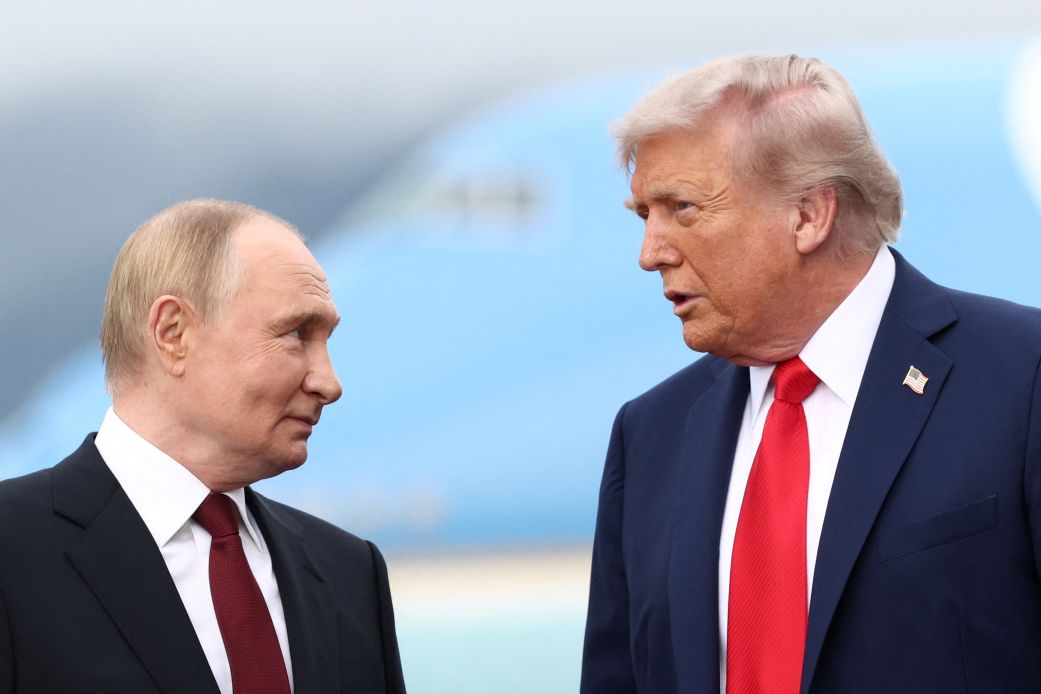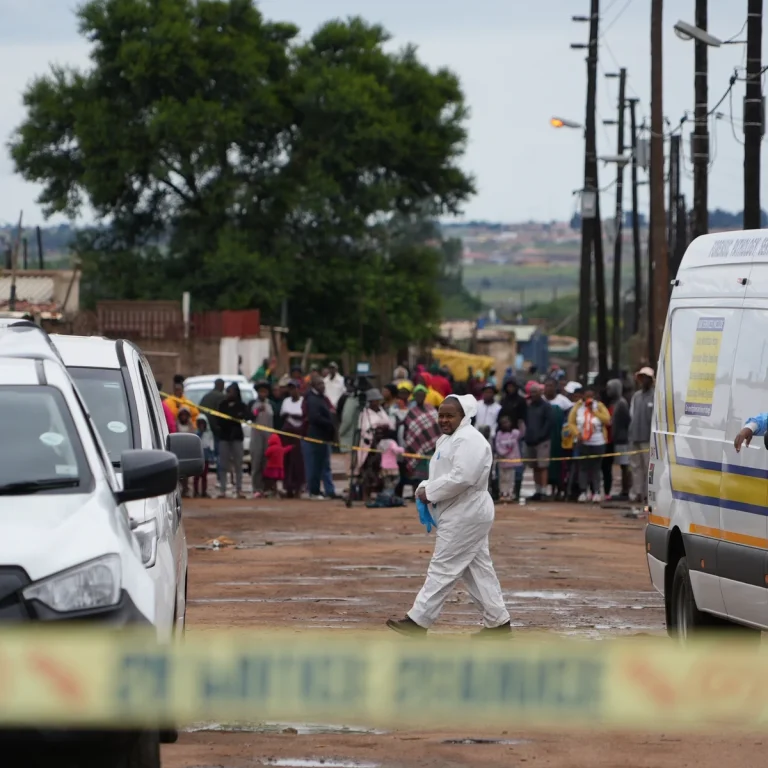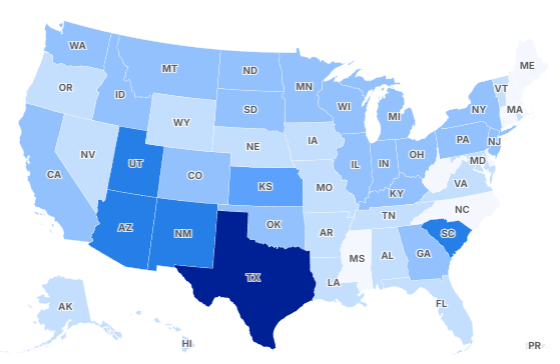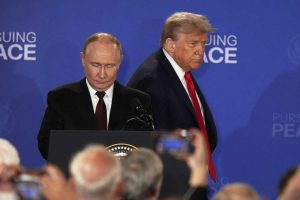In the hours following one of the most closely watched diplomatic encounters of the modern era, an unprecedented sequence of events has begun to unfold that could fundamentally alter the trajectory of a devastating conflict that has reshaped global politics and claimed hundreds of thousands of lives.
The developments come at a critical juncture when the world has been watching for any sign of progress in ending a war that has tested international alliances, triggered the largest refugee crisis in Europe since World War II, and brought nuclear powers closer to direct confrontation than at any point since the Cold War. What emerged from recent diplomatic communications suggests that the landscape of this crisis may be shifting in ways few anticipated.
The implications of these developments extend far beyond the immediate participants, potentially affecting everything from energy markets and food security to military alliances and the global balance of power. As world leaders and international observers parse every word and gesture, the stakes could not be higher for millions of people whose lives hang in the balance.
Trump’s Optimistic Assessment
President Donald Trump struck a notably positive tone in an early-morning social media post that provided the first detailed readout of his historic summit with Russian President Vladimir Putin in Alaska. The meeting, which took place at Joint Base Elmendorf-Richardson, represented the first face-to-face encounter between the two leaders since Trump’s return to office and carried enormous symbolic and practical significance.
“A great and very successful day in Alaska! The meeting with President Vladimir Putin of Russia went very well, as did a late night phone call with President Zelenskyy of Ukraine, and various European Leaders, including the highly respected Secretary General of NATO,” Trump wrote on his Truth Social platform.
The president’s characterization of the summit as “very successful” marked a significant shift from the more cautious tone he had adopted immediately following the meeting, when he emphasized that “there’s no deal until there’s a deal.” His overnight assessment suggested that subsequent conversations with key stakeholders had provided renewed momentum for diplomatic progress.
The reference to a “late night phone call” with Ukrainian President Volodymyr Zelensky was particularly noteworthy, as it indicated that Trump had followed through on his promise to brief the Ukrainian leader about the Alaska discussions before moving forward with any agreements. The inclusion of NATO Secretary General Mark Rutte and other European leaders in these consultations demonstrated an effort to maintain allied unity in approaching the conflict.
A Strategic Shift Toward Comprehensive Peace
In his Truth Social post, Trump revealed what appeared to be a fundamental change in approach to resolving the Ukraine conflict. Rather than pursuing incremental steps or temporary measures, the president indicated that all parties had agreed on pursuing a more ambitious and permanent solution.
“It was determined by all that the best way to end the horrific war between Russia and Ukraine is to go directly to a Peace Agreement, which would end the war, and not a mere Ceasefire Agreement, which often times do not hold up,” Trump explained.
This strategic pivot represents a significant departure from traditional diplomatic approaches to ending armed conflicts, which typically involve graduated steps including ceasefires, monitoring arrangements, and gradual implementation of broader agreements. Trump’s emphasis on avoiding a “mere Ceasefire Agreement” suggested skepticism about temporary measures that might provide only brief respites before hostilities resume.
The decision to pursue comprehensive peace talks rather than interim arrangements reflects lessons learned from numerous previous conflicts where ceasefires collapsed and fighting resumed. Historical examples from conflicts in the Balkans, Middle East, and elsewhere have demonstrated that partial agreements can sometimes become obstacles to lasting peace if they become entrenched without addressing underlying issues.
Trump’s approach also acknowledges the complex nature of the Russia-Ukraine conflict, which involves not just territorial disputes but fundamental questions about security architecture, NATO expansion, energy infrastructure, and the broader relationship between Russia and the West.
The Zelensky Meeting: A Critical Next Step
The most significant development revealed in Trump’s post was the announcement of an imminent meeting with Ukrainian President Zelensky at the White House. “President Zelenskyy will be coming to D.C., the Oval Office, on Monday afternoon. If all works out, we will then schedule a meeting with President Putin. Potentially, millions of people’s lives will be saved,” Trump wrote.
This sequence of meetings represents a carefully choreographed diplomatic process designed to bring all parties into alignment before attempting to finalize any agreements. The decision to meet with Zelensky first demonstrates respect for Ukrainian sovereignty and addresses concerns that had been raised by European allies about making decisions about Ukraine without Ukrainian participation.
The timing of the Monday afternoon meeting at the White House provides Zelensky with the opportunity to review whatever agreements or understandings emerged from the Alaska summit and to provide Ukrainian input before any final commitments are made. This approach helps address one of the key criticisms that had emerged from European capitals about the Alaska summit: that Ukraine was not represented in discussions about its own future.
The conditional nature of Trump’s statement about scheduling a subsequent meeting with Putin – “If all works out” – suggests that Ukrainian agreement to the framework discussed in Alaska will be essential for moving forward. This gives Zelensky significant leverage in the process while also creating pressure to reach agreement.
Putin’s Validation of Trump’s Approach
During the joint press conference following the Alaska summit, Putin provided what amounted to a strong endorsement of Trump’s longstanding claim that the Ukraine war would never have occurred if Trump had been president in 2022. This validation from Putin himself added significant weight to Trump’s argument and provided important context for the current diplomatic initiative.
“I can confirm that,” Putin said when asked about Trump’s assertion that the war would not have started during a Trump presidency. The Russian leader elaborated on this theme, describing conversations he had with the previous administration about preventing the conflict from reaching “a point of no return.”
“I’d like to remind you that in 2022, during the last contact with a previous administration, I tried to convince my previous American colleague that the situation should not be brought to a point of no return when it would come to hostilities and I said it quite directly back then that it’s a big mistake,” Putin explained through translation.
Putin’s comments provided insight into his perspective on how the conflict developed and suggested that he viewed the current diplomatic initiative as an opportunity to return to a more constructive relationship with the United States. His statement that “Today, when President Trump is saying that if he was the president back then there would be no war – I am quite sure that it would indeed be so” represented a significant public acknowledgment of Trump’s diplomatic approach.
Bilateral Relations and Broader Implications
Beyond the immediate focus on Ukraine, Putin used the Alaska summit to address the broader state of U.S.-Russia relations and the potential for improvement under Trump’s leadership. His comments revealed frustration with the deterioration of bilateral ties during the previous administration and optimism about the possibility of reset.
“U.S.-Russia relations before Trump had fallen to the lowest point since the Cold War,” Putin noted, emphasizing that no bilateral summits had taken place between the two countries over the past four years. He characterized this situation as “not benefiting our countries and the world as a whole” and expressed hope that the new administration would mark a turning point.
Putin’s praise for Trump’s approach to understanding the conflict was particularly notable. He described Trump’s “strive to get to the crux of the matter and to understand this history” as “precious,” suggesting that he viewed the American president as genuinely committed to comprehending the complex background to the conflict rather than simply imposing solutions.
The Russian leader’s optimism about future relations was evident in his statement that he and Trump had “built a very good business-like and trustworthy contact” and had “every reason to believe that moving down this path we can come to the end of the conflict in Ukraine.”
The Diplomatic Architecture Taking Shape
The emerging diplomatic framework appears to involve multiple layers of engagement designed to ensure that all stakeholders have input into any final agreement. The sequence of Trump’s post-Alaska consultations – first with Zelensky, then with European leaders and NATO officials – suggests a systematic approach to building consensus.
The involvement of NATO Secretary General Mark Rutte in the overnight phone calls was particularly significant, as it indicated that the alliance would have a voice in shaping any agreements. This addresses concerns that had been raised by European allies about being marginalized in the diplomatic process.
The potential for a subsequent Trump-Putin meeting, contingent on Ukrainian agreement, creates a structure that could lead to a trilateral summit or parallel bilateral meetings that achieve the same result. This approach allows for face-saving measures for all parties while ensuring that key decisions are made with full participation.
European leaders have been watching these developments closely, having issued statements before the Alaska summit insisting that “the path in Ukraine cannot be decided without Ukraine.” The diplomatic architecture that appears to be emerging addresses these concerns while maintaining momentum toward a comprehensive agreement.
Historical Context and Precedents
The approach being pursued by Trump draws on lessons from previous diplomatic successes and failures. The emphasis on comprehensive peace agreements rather than incremental steps reflects analysis of conflicts where partial measures failed to achieve lasting resolution.
The Camp David Accords between Egypt and Israel, brokered by President Carter, provide one model for the kind of comprehensive approach Trump appears to be pursuing. Similarly, the Good Friday Agreement in Northern Ireland demonstrated how complex conflicts involving multiple parties and fundamental questions of sovereignty could be resolved through patient diplomacy and carefully constructed frameworks.
However, the scale and complexity of the Russia-Ukraine conflict presents challenges that dwarf most previous diplomatic efforts. The involvement of nuclear powers, the scale of military operations, the number of civilian casualties, and the global economic implications all create unique pressures and complications.
The potential for “millions of people’s lives” to be saved, as Trump noted in his post, reflects the enormous human cost of continued conflict. Beyond the immediate battlefield casualties, the war has created humanitarian crises, disrupted food and energy supplies globally, and created conditions that could lead to broader regional or even global conflict.
Economic and Strategic Considerations
The economic implications of a successful peace agreement would be enormous, potentially affecting energy markets, grain supplies, reconstruction financing, and broader economic stability. The war has disrupted global supply chains, contributed to inflation, and created energy security challenges particularly for European nations.
Russia’s role as a major energy supplier and Ukraine’s importance as a grain exporter mean that ending the conflict could have immediate positive effects on global economic stability. However, any agreement would also need to address questions about sanctions, reparations, and the reconstruction of damaged infrastructure.
The strategic implications are equally significant. The conflict has led to NATO expansion, increased military spending across Europe, and fundamental changes in security architecture. Any peace agreement would need to address these broader strategic questions while providing security guarantees that all parties could accept.
Challenges and Uncertainties Ahead
Despite the optimistic tone of Trump’s post and the apparent progress achieved in Alaska, significant challenges remain. The fundamental disagreements that led to the conflict have not been resolved, and translating diplomatic momentum into concrete agreements will require navigating complex political, legal, and practical obstacles.
Ukrainian domestic politics present one significant challenge. Any agreement that involves territorial concessions would require constitutional changes that might prove difficult to achieve. Zelensky’s ability to sell any compromise to the Ukrainian parliament and public will be crucial to the success of the diplomatic initiative.
Russian domestic considerations are equally important. Putin must balance his desire for diplomatic success with domestic pressures and the expectations of military and security officials who have invested heavily in the conflict.
International law and accountability questions also present challenges. Issues related to war crimes investigations, reparations, and the establishment of transitional justice mechanisms could complicate efforts to achieve a comprehensive agreement.
The Global Stakes
The success or failure of this diplomatic initiative will have implications far beyond Ukraine and Russia. China, Iran, North Korea, and other nations are watching closely to see whether diplomatic engagement with the United States can produce positive results or whether confrontational approaches are more effective.
European allies are particularly invested in the outcome, as they have borne significant economic and security costs from the conflict. Their support for any agreement will be crucial for its long-term success and implementation.
The precedent set by this diplomatic effort could influence how future conflicts are approached and resolved. Success could encourage more ambitious diplomatic initiatives in other regions, while failure might reinforce tendencies toward military solutions over diplomatic ones.
Looking Toward Monday and Beyond
The Monday afternoon meeting between Trump and Zelensky at the White House represents a crucial test of whether the diplomatic momentum generated in Alaska can be sustained and translated into concrete progress. The Ukrainian president will need to balance his country’s fundamental security interests with the opportunities presented by the diplomatic opening.
Trump’s promise to potentially schedule a meeting with Putin “if all works out” creates both pressure and opportunity for productive discussions. The conditional nature of this commitment gives Zelensky significant leverage while also creating incentives for compromise.
The international community will be watching closely to see whether this diplomatic initiative can succeed where previous efforts have failed. The stakes, as Trump noted, could not be higher – with millions of lives potentially hanging in the balance and the future of international order at stake.
The coming days will reveal whether the optimism expressed in Trump’s early-morning post reflects genuine diplomatic breakthrough or merely another temporary pause in a conflict that has defied previous efforts at resolution. The world waits to see whether this moment represents a turning point toward peace or simply another chapter in a tragic and destructive war.
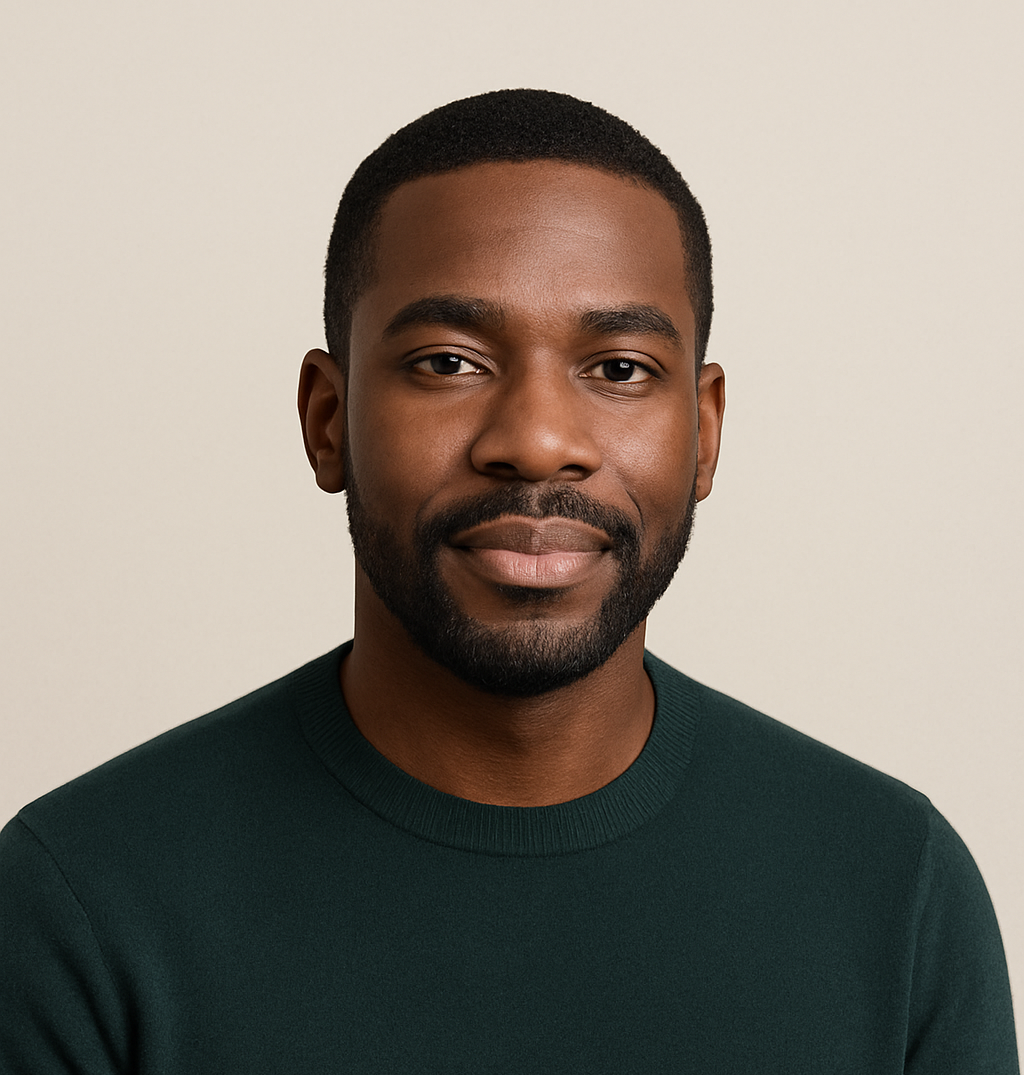
James Jenkins is a celebrated Pulitzer Prize-winning author whose work has reshaped the way readers think about social justice and human rights in America. Raised in Atlanta, Georgia, James grew up in a community that instilled in him both resilience and a strong sense of responsibility toward others. After studying political science and creative writing at Howard University, he worked as a journalist covering civil rights issues before dedicating himself fully to fiction. His novels are known for their sharp, empathetic portraits of marginalized communities and for weaving personal stories with broader political realities. Jenkins’s breakout novel, Shadows of Freedom, won national acclaim for its unflinching look at systemic inequality, while his more recent works explore themes of identity, resilience, and the fight for dignity in the face of oppression. Beyond his novels, James is an active public speaker, lecturing at universities and participating in nonprofit initiatives that support literacy and community empowerment. He believes that storytelling is a way to preserve history and inspire change. When not writing, James enjoys jazz music, mentoring young writers, and traveling with his family to explore cultures and stories around the world.
